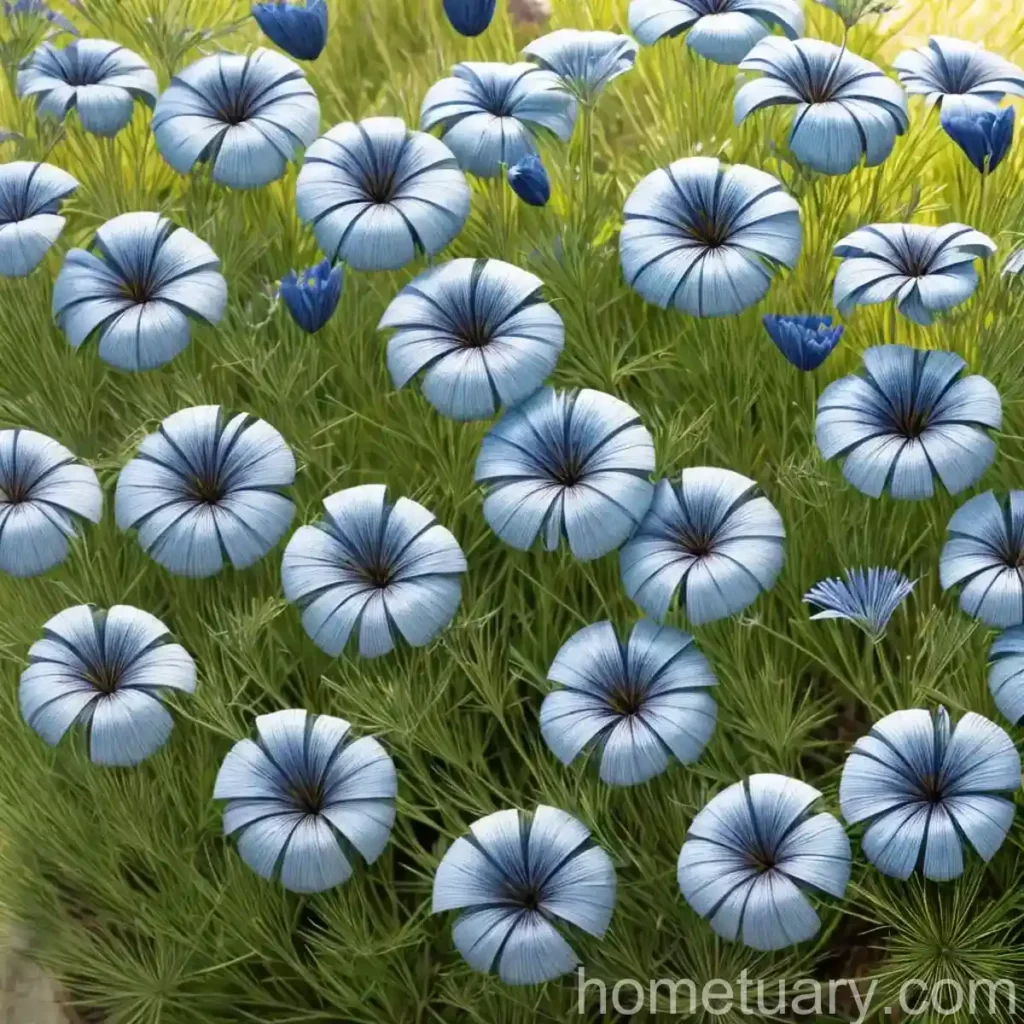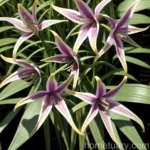All About Perennial Flax (Linum perenne ‘Appar’)
In the world of growing and cultivating plants, perennial flax (Linum perenne ‘Appar’) stands as an enchanting addition to any garden or landscape. With its delicate blue flowers and slender, elegant leaves, this plant holds both aesthetic and utilitarian value. In this comprehensive guide, we will explore the various facets of perennial flax, including its culture, uses, maintenance, and much more. Let’s embark on a journey through the enchanting world of perennial flax – a species that captivates not only with its beauty but also with its versatility and historical significance.
What is Plant: Perennial Flax (Linum perenne ‘Appar’)?
Plant Name and Classification
Scientific Name: Linum perenne ‘Appar’
Common Name: Perennial Flax
Family: Linaceae
Genus: Linum
Species: Perenne ‘Appar’
Physical Description
Perennial flax is a herbaceous, perennial plant that is recognized for its slender stems, lance-shaped leaves, and delicate blue flowers. It typically reaches a height of 18-24 inches, creating a captivating visual display. The flowers boast five petals and exhibit a pale to mid-blue hue, adding an ethereal touch to any landscape.
Historical Significance
The cultivation of flax dates back thousands of years and holds immense historical significance. From the production of linen to the extraction of flaxseed oil, flax has been utilized for various purposes across different cultures and time periods. It has also played a vital role in traditional medicine, culinary practices, and even folklore.
Now that we have an overview of perennial flax, let’s delve into the specifics of its culture, uses, and maintenance.
Key Takeaways – Perennial Flax (Linum perenne ‘Appar’)
Before we venture into the intricacies of growing and caring for perennial flax, let’s highlight the core aspects of this enchanting plant. The key takeaways encapsulate the essence of perennial flax and its varied uses.
- Beauty and Versatility: Perennial flax is prized for its delicate blue flowers and slender, elegant leaves. Beyond its aesthetic appeal, it offers a multitude of uses, ranging from ornamental purposes to medicinal and culinary applications.
- Historical Significance: With a history steeped in tradition and cultural significance, perennial flax has transcended time, leaving an indelible mark on various aspects of human life.
- Adaptability: This plant exhibits admirable resilience, thriving in diverse growing conditions and serving as a valuable ally in landscaping, gardening, and sustainable practices.
Now, let’s explore the realm of perennial flax in greater detail, starting with its cultural requirements.
Culture
Cultivating perennial flax is a gratifying experience that rewards the grower with its captivating blooms and rich history. Understanding its cultural needs is paramount to fostering its growth and ensuring optimal health.
Water
- Watering Needs: Perennial flax thrives in well-drained soil and prefers moderate watering, especially during dry spells. It is essential to strike a balance, avoiding waterlogged conditions that can lead to root rot.
- Established Plants: Once established, perennial flax demonstrates a degree of drought tolerance, making it an excellent choice for water-wise landscapes.
Sunlight
- Light Requirements: This plant flourishes in full sun to partial shade, with a preference for at least 6 hours of sunlight daily. Adequate sunlight fosters robust flowering and overall vigor.
Fertilizer
- Nutrient Needs: Perennial flax benefits from a light application of balanced fertilizer in early spring to support healthy growth and prolific blooming. Opt for a balanced, slow-release fertilizer to avoid excessive vegetative growth at the expense of flowering.
Soil
- Ideal Soil Type: Well-drained, loamy soil provides an ideal medium for perennial flax, allowing its roots to access oxygen and essential nutrients. Amending heavy soils with organic matter can enhance drainage and overall soil structure.
Uses
Ornamental Value
- Garden Beauty: The delicate, sky-blue flowers of perennial flax impart an enchanting allure to gardens, borders, and rockeries. Its graceful presence adds a touch of elegance to any landscape.
Medicinal and Culinary Applications
Medicinal Uses
- Traditional Medicine: Throughout history, flax has been used in traditional medicine for its potential health benefits. The seeds are a rich source of omega-3 fatty acids and lignans, contributing to its medicinal value.
Culinary Uses
- Nutritious Seeds: The seeds of perennial flax are esteemed for their nutritional content, often incorporated into various culinary creations such as smoothies, baked goods, and salads.
Textile Production
- Linen Production: The fibers obtained from the stems of flax plants are used in the production of linen, an age-old textile valued for its durability and breathability.
Pollinator Support
- Wildlife Attraction: The nectar-rich blooms of perennial flax serve as a valuable food source for pollinators, including bees and butterflies, promoting biodiversity in the garden.
Now that we have explored the cultural requirements and uses of perennial flax, we can turn our attention to the maintenance practices and propagation of this captivating plant.
Pruning
Deadheading
- Promoting Blooms: Regular deadheading of spent flowers encourages prolonged blooming, enhancing the visual appeal of the plant and preventing the formation of seeds.
Propagation
Methods
- Seed Propagation: Perennial flax can be propagated from seeds, sown directly in the garden or started indoors before the last frost date. The seeds require light for germination, necessitating surface sowing and gentle pressing to ensure good seed-to-soil contact.
Division
- Clump Division: Established clumps of perennial flax can be divided in early spring, rejuvenating the plant and yielding additional specimens for propagation or sharing with fellow gardeners.
Container Popularity and Requirements
Container Growing
-
Suitability: Perennial flax adapts well to container culture, adding a touch of elegance to patios, balconies, and other outdoor spaces. Choose a container with adequate drainage holes and use a well-draining potting mix.
-
Maintenance: Container-grown flax may require more frequent watering than their in-ground counterparts, as containers tend to dry out more rapidly. Regular monitoring of soil moisture is crucial for their well-being.
Common Diseases
Disease Diagnosis
Identifying and addressing potential diseases is pivotal in maintaining the health and vitality of perennial flax. While this plant is relatively resistant to disease, it may occasionally encounter certain issues that warrant attention.
- Fungal Diseases: Keep an eye out for signs of fungal diseases such as powdery mildew and rust, particularly during periods of high humidity. Provide good air circulation and avoid overhead watering to reduce the risk of fungal infections.
Common Pests
Pest Management
- Aphids: These small, sap-feeding insects can sometimes target perennial flax, clustering on tender new growth and causing distortion or yellowing of leaves. They can be dislodged with a strong stream of water or managed with insecticidal soap if their numbers become problematic.
With the knowledge of maintenance practices, disease management, and propagation techniques, we can further enrich our understanding of perennial flax through the lens of a botanist’s tips and fun facts. Let’s venture into the realm of fascinating insights and practical advice that elevate the appreciation of this extraordinary plant.
Botanist’s Tips
Enriching Garden Soil
- Organic Matter: Incorporating compost or well-rotted manure into the soil provides perennial flax with essential nutrients, fosters beneficial microbial activity, and enhances soil structure.
Biodiversity Promotion
- Companion Planting: Pairing perennial flax with other native or pollinator-friendly plants creates a biodiverse and visually appealing landscape while supporting ecosystem health.
Fun Facts
- Symbolism: In different cultures, flax has been associated with symbols of purity, renewal, and prosperity, reflecting its profound cultural significance.
- Historical Trade: The production and trade of flax and its products have played a pivotal role in the economic and cultural development of various civilizations throughout history.
As we unravel the intricacies of perennial flax, it becomes evident that this plant extends an invitation to delve deeper into its multi-faceted nature. Now, let’s delve into the vast resources available for those seeking a deeper understanding of perennial flax, from its historical and cultural significance to its contemporary applications and care.
Links to External Resources
For those intrigued by the allure of perennial flax and eager to explore its diverse facets, the following resources offer valuable insights:
- Royal Horticultural Society (RHS) – Perennial Flax
- The Spruce – How to Grow and Care for Flax
- University of Illinois Extension – Perennial Flax
- Missouri Botanical Garden – Linum perenne ‘Appar’
- Flax Council of Canada – Flax Production Information
This compendium of resources provides a comprehensive understanding of perennial flax, catering to enthusiasts ranging from novice gardeners to seasoned horticulturists and researchers. Whether one seeks historical insights, cultivation guidelines, or practical applications, these resources serve as beacons of knowledge in the realm of perennial flax.
In conclusion, the allure of perennial flax resonates through its captivating blooms, historical significance, and diverse uses, encapsulating a rich tapestry of culture, resilience, and natural beauty. As we journey through the cultural significance, uses, maintenance, and enchanting aspects of perennial flax, we unveil a world brimming with possibilities and historical resonance, inviting us to delve deeper into this enchanting plant.
As we navigate the realms of botanical wonders, let perennial flax be a guiding star, illuminating the path to a deeper connection with nature, history, and the myriad wonders found within the realm of horticulture.
With its captivating blooms and historical significance, perennial flax (Linum perenne ‘Appar’) stands as an enchanting addition to any garden or landscape. From its ornamental beauty to its medicinal and culinary uses, this resilient plant offers a wealth of benefits and cultural significance. Delve into the captivating world of perennial flax, and discover the allure of this extraordinary plant.















